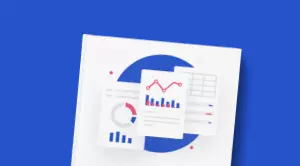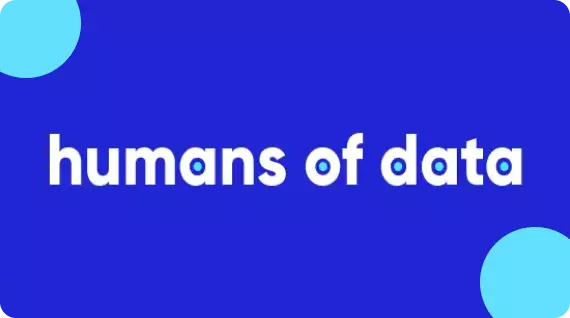Spatial Data: Definition, Types, Examples, Use Cases & More!
Share this article
In today’s increasingly interconnected and digital world, spatial data has emerged as a critical element in shaping how we understand and interact with our environment. Often referred to as geospatial data, it encapsulates the information regarding the physical locations and characteristics of objects on earth.
Spatial data can help you understand climate change, respond to emergencies, track diseases and more. It can even help you choose the best spot for your next retail outlet/office! In other words, it impacts everything in our lives.
Unlock Your Data’s Potential With Atlan – Start Product Tour
It has emerged as a crucial building block for numerous applications — ranging from urban planning to virtual reality experiences. The explosion of digital connectivity and smart technologies has only magnified the importance of understanding how spatial data works, what types it comes in, and how we can best utilize it for effective decision-making.
In this article, we will understand:
- What is spatial data?
- 4 Types of spatial data
- The role played by spatial data in modern decision-making
- How spatial data works?
- What software tools does spatial data use?
Ready? Let’s dive in!
Table of contents #
- What is spatial data: Understanding with examples
- 4 Types of spatial data to know in 2023
- Understanding the mechanics of spatial data: From collection to application
- Understanding the importance of spatial data in modern decision-making
- 5 Use cases of spatial data
- Exploring the uses of spatial data: From GIS to virtual reality
- 4 Software tools used by spatial data
- Summary
- Related reads
What is spatial data: Understanding with examples #
Spatial data, also known as geospatial data, refers to information that identifies the geographic location and characteristics of natural or constructed features and boundaries on the Earth.
This data is often represented in terms of Cartesian coordinates (x,y) for two-dimensional maps, but may also include altitude (z) for a three-dimensional representation. Spatial data can come in various forms including points (e.g., GPS coordinates), lines (e.g., roads or rivers), and polygons (e.g., borders, land use zones).
The concept of spatial data is integral to a variety of applications that require an understanding of how different elements relate to each other within a geographical space. This data can be collected through various means, including but not limited to, satellite imagery, aerial photography, and ground-based surveys.
Let us understand with an example
Urban Planning #
Consider the task of urban planning in a growing city. Planners need various types of spatial data to make informed decisions, such as:
- Points: Locations of public amenities like schools, parks, and hospitals.
- Lines: Routes of public transport, roads, utility lines.
- Polygons: Zoning information, like commercial, residential, and industrial zones.
Using this data, planners can analyze how a new housing development might impact traffic patterns, whether there is easy access to public amenities.
If there are any conflicts with existing zoning laws. GIS (Geographic Information Systems) software can help planners visualize and analyze these spatial relationships effectively.
For example, if a new school is to be built, spatial data can help determine an optimal location that is equidistant from most households.
It is safely away from industrial zones, and has convenient road access. This is all achieved by layering and analyzing the various forms of spatial data in a GIS system to make the most informed decision possible.
So, spatial data is not just a tool for geographers or cartographers; it’s a fundamental aspect of a wide range of professions and fields.
Now that we are clear with the concepts let us know about the types of spatial data available.
4 Types of spatial data to know in 2023 #
Spatial data can be broadly categorized into two main types: vector and raster. Each of these types has its own advantages and disadvantages, and they are often used in conjunction for more comprehensive analysis and representation of geographical phenomena.
- Vector data
- Raster data
- Attribute data
- Temporal data
Let us understand each of them in detail:
1. Vector data #
Vector data uses points, lines, and polygons to represent the spatial features of an object or area.
- Points: Points are the simplest type of vector data and are used to represent features that can be located by a single coordinate pair, usually in x, and y format. Examples include locations of ATMs, tree positions in a forest, or the epicentre of an earthquake.
- Lines: Lines are ordered sequences of points that represent the shape and location of linear features. Roads, rivers, and utility lines are often represented as lines. Each line is composed of multiple points, and the arrangement of these points determines the shape of the line.
- Polygons: Polygons are closed loops of lines that enclose an area. They are used to represent features that have a defined area and boundary, such as buildings, lakes, or land use zones (residential, commercial, etc.). A polygon is essentially a line whose start and end points are the same, thereby enclosing an area.
2. Raster data #
Raster data is essentially pixel-based data where each pixel has a value representing information. These are particularly useful for representing data that varies continuously over space and is more naturally suited to a grid format.
- Digital elevation models (DEM): This type of raster data represents elevation or depth. Each cell in the raster grid contains a value representing the height of the Earth’s surface at that location.
- Satellite imagery: Each cell in a raster grid contains color values that collectively make up a satellite image. This is valuable for land cover mapping, environmental monitoring, and disaster assessment.
- Temperature maps: In these rasters, each cell contains a value representing the temperature at a specific location. This can be useful for climate modeling and weather prediction.
- Land use maps: These maps divide a region into cells that each represent a type of land use, such as urban, agricultural, or forested land.
3. Attribute data #
Both vector and raster data often come with associated attribute data. This is additional information that describes the characteristics of the spatial features.
For example, a point that represents a school in vector data may have attribute data such as the school’s name, number of students, or education level (elementary, secondary, etc.).
4. Temporal data #
In many applications, spatial data is also associated with a specific time or time range, known as temporal data.
For instance, a satellite image (raster data) may be timestamped to indicate when it was captured, or a GPS tracking point (vector point data) may include the time at which a person or vehicle was at a specific location.
Each of these types of spatial data serves different needs and is suitable for different kinds of analysis.
Often, multiple types are used in conjunction to provide a more complete picture of a geographical area or to answer more complex questions. But how does this spatial data work?
The next section will be the mechanism behind spatial data .
Understanding the mechanics of spatial data: From collection to application #
Spatial data, sometimes referred to as geospatial data, describes information that represents the physical location and shape of geometric objects. These objects can be point locations, lines, polygons, and complex multi-part collections of these types.
Spatial data is often accompanied by attribute data that provides more information about each geometric feature; for example, a point could represent a city, and the accompanying attributes could include the city’s name, population, and area.
Let us start with the components underlying spatial data.
Components of spatial data #
- Geometry: This refers to the coordinates that define the shape of an object. Coordinates are often in the form of latitude and longitude for geographical data or X and Y in a Cartesian coordinate system for local scale data.
- Topology: This describes the spatial relationship between connecting or adjacent features. Topological rules might specify that polygons should not overlap or that lines must be connected at both ends.
- Attribute data: These are additional data fields that describe the characteristics of the spatial features, such as name, temperature, or any other metrics that are relevant to the data set.
How does it work? #
- Data collection: The first step is the collection of data, which could be done through various methods including satellite imagery, GPS surveys, and traditional surveying methods.
- Data storage: Spatial data is often stored in specialized formats like Shapefiles, GeoJSON for vector data, or GeoTIFF for raster data. Databases like PostgreSQL with PostGIS extensions are also commonly used for more complex data storage and retrieval needs.
- Data analysis: Specialized software (like GIS applications) and programming libraries (like sf in R, or Geopandas in Python) are used to manipulate and analyze spatial data. These tools allow for spatial operations like intersection, union, buffer, and more.
- Data visualization: The data can be visualized using various tools ranging from specialized GIS software like ArcGIS to general data visualization libraries like Matplotlib in Python or ggplot2 in R.
- Querying and filtering: Spatial databases allow complex queries that consider spatial relationships, such as finding all points within a certain distance from a line, or finding the shortest path between two points based on a network of lines (roads).
- Interoperability: Spatial data often needs to be shared across different platforms and tools. Standards like WMS (Web Map Service) and WFS (Web Feature Service) are often used to ensure that different systems can understand and utilize the data.
If you want to know the technique of visualizing spatial data check out the following article → 7 Techniques to Visualize Geospatial Data
Understanding the importance of spatial data in modern decision-making #
The importance of spatial data cuts across various disciplines, industries, and aspects of everyday life. Here’s a detailed look at why spatial data is so crucial:
- Scientific research
- Public policy and government
- Business and economics
- Healthcare
- Technology and innovation
- Everyday life
- Historical and cultural studies
- Interdisciplinary synergy
Let us understand each of them in detail:
1. Scientific research #
- Climate change modeling: Understanding the spatial distribution of variables like temperature and precipitation is crucial for modeling climate change. Accurate spatial data helps scientists make better predictions about future conditions and assess areas most at risk.
- Environmental conservation: Spatial data can help identify critically endangered habitats and track changes in land use, allowing for targeted conservation efforts.
2. Public policy and government #
- Urban planning: The planning of cities requires a detailed understanding of land use, population density, and transportation networks, all of which are informed by spatial data.
- Emergency response: In the event of natural disasters like hurricanes or earthquakes, spatial data can be crucial for identifying affected areas, planning evacuation routes, and deploying resources effectively.
- Resource allocation: Governments can use spatial data to optimize the location of public services like hospitals, schools, and police stations, ensuring equitable access for all citizens.
3. Business and economics #
- Market research: Businesses use spatial data to identify potential locations for new outlets, assess competition, and understand demographic trends in different geographical areas.
- Supply chain optimization: By understanding the spatial relationships between various nodes in a supply chain, companies can optimize routes and reduce costs.
- Real estate: Location is everything in real estate. Spatial data can provide invaluable insights into property values based on proximity to amenities, quality of local schools, and more.
4. Healthcare #
- Disease tracking: Spatial data is crucial for epidemiology. It helps in tracking the spread of diseases and enables targeted public health interventions.
- Accessibility: Spatial analysis can help assess how easily people can access healthcare services, which is crucial for planning and policy-making.
5. Technology and innovation #
- Navigation apps: Apps like Google Maps and Waze rely heavily on spatial data to provide real-time navigation and traffic updates.
- Augmented reality: AR applications often need to integrate digital information with the physical world, requiring precise spatial data.
6. Everyday life #
- Personal navigation: From finding a nearby restaurant to planning a road trip, spatial data affects decisions in our daily lives.
- Social connectivity: Social media platforms sometimes use spatial data to enable location-based services, like “check-ins” or location-based search.
7. Historical and cultural studies #
- Archaeology: Spatial data can be used to map archaeological sites and understand historical land use and human activity.
- Cultural heritage: Identifying and preserving culturally significant sites is facilitated by accurate spatial data.
8. Interdisciplinary synergy #
- Spatial data often serves as a common ground that allows for interdisciplinary collaboration.
- For instance, an environmental scientist and an urban planner might both be interested in land use data for different purposes: one to monitor habitat loss and the other to plan future development.
- By using the same spatial data but applying different layers of analysis, both can benefit.
In summary, spatial data is not just a tool for geographers but a foundational element that supports a wide range of applications and disciplines. Its importance is amplified in today’s data-driven world, where the ability to analyze and interpret spatial relationships provides critical insights for decision-making, problem-solving, and understanding complex systems.
5 Use cases of spatial data #
Spatial data, also known as geospatial data, refers to information about the physical location and shape of objects on Earth. This type of data is becoming increasingly important in a wide range of industries and applications. Here are some key use cases of spatial data:
- Urban planning and infrastructure development
- Environmental management and conservation
- Disaster management and response
- Agriculture and land management
- Transportation and logistics
Let’s look at them in detail:
1. Urban planning and infrastructure development #
In urban planning and infrastructure development, spatial data plays a pivotal role. It is extensively used for meticulous planning and zoning, allowing urban planners to visualize and designate areas for residential, commercial, industrial, and recreational purposes.
The data is crucial in designing efficient transportation networks, helping to analyze traffic patterns, identify congestion areas, and plan new roads or public transit routes. Furthermore, it facilitates the strategic placement of utilities like water, sewage, and power lines, optimizing their layout to meet community needs while minimizing environmental impact.
Spatial data also ensures that public amenities such as parks, schools, and hospitals are evenly distributed across urban areas, enhancing accessibility and quality of life for residents.
2. Environmental management and conservation #
In the realm of environmental management and conservation, spatial data is invaluable. It is employed to monitor natural resources, tracking the use and depletion of crucial assets like forests, water bodies, and wildlife habitats.
This data is instrumental in climate change analysis, enabling modeling of impacts, predicting sea-level rises, and assessing the vulnerability of regions to extreme weather events.
Moreover, spatial data is central to biodiversity conservation, as it assists in mapping wildlife habitats and migration routes, thereby enabling the creation of effective conservation strategies and protected area networks.
3. Disaster management and response #
Spatial data is a vital tool in disaster management and response. It is used for risk assessment, helping to map areas prone to natural disasters such as floods, earthquakes, or hurricanes, and aiding in mitigation planning.
In the wake of a disaster, real-time spatial data becomes crucial for coordinating rescue and relief operations, mapping affected areas, and planning evacuation routes efficiently.
Additionally, in the post-disaster recovery phase, spatial data aids in damage assessment and informs the rebuilding and rehabilitation efforts, ensuring that reconstruction efforts are resilient against future disasters.
4. Agriculture and land management #
In agriculture and land management, spatial data facilitates precision farming, enabling farmers to apply water, fertilizers, and pesticides in exact amounts where needed based on soil and crop conditions. This data is also key in predicting crop yields, which is crucial for planning supply chains and determining market pricing.
Furthermore, spatial data assists in making informed decisions about crop rotation, land rest periods, and sustainable land use practices. This balance between productivity and environmental conservation is essential for long-term agricultural sustainability.
5. Transportation and logistics #
For transportation and logistics, spatial data is integral to optimizing routes, which helps in reducing travel time and fuel consumption for logistics companies. It enhances fleet management by allowing real-time tracking of vehicles, ensuring efficient fleet utilization and timely deliveries.
Moreover, spatial data plays a significant role in planning transportation infrastructure like ports, railways, and airports. Its use ensures that these infrastructures are optimally located to serve trade and commerce needs effectively, contributing to the overall efficiency and economy of the transportation sector.
Each of these use cases demonstrates the diverse and significant impact of spatial data across various sectors, highlighting its role in driving efficient, sustainable, and informed decision-making.
Exploring the uses of spatial data: From GIS to virtual reality #
Spatial data can be used in a multitude of ways, depending on the objectives and the specific types of data at hand.
The different ways are:
- Using spatial data in GIS
- Using spatial data for graphics
- Using spatial data for statistics
- Using spatial data for virtual reality
Let us understand these use cases in detail:
1. Using spatial data in GIS #
Geographic Information Systems (GIS) is one of the most versatile and powerful tools for utilizing spatial data. Here’s how to use spatial data with a focus on the context of GIS:
Importing data into GIS
Before you can use spatial data, it needs to be imported into a GIS software package like QGIS, ArcGIS, or others. Most GIS platforms support a wide variety of file formats, such as shapefiles for vector data or GeoTIFFs for raster data.
Data visualization
Once imported, the spatial data can be visualized in the form of maps. GIS software allows you to:
- Overlay multiple layers of data (e.g., roads, land use, rivers) on a single map.
- Customize the appearance of these layers by changing colors, line weights, and other visual elements.
- Add labels, legends, and other map elements to make the data more understandable.
Data analysis
GIS is not just for creating maps; it’s also a powerful tool for spatial analysis. Some typical analytical functions include:
-
Buffering: Creating a zone around a specific point, line, or polygon. This is useful for questions like, “What buildings are within 500 meters of a river?”
-
Spatial join: Linking information from different datasets based on their spatial relationship. For example, you could determine which electoral district each school in a city belongs to.
-
Network analysis: Useful for tasks like finding the shortest path between points along a network of roads.
-
Interpolation: Predicting values for areas where no data is available based on known values from surrounding areas. This is often used in environmental science to predict pollution or temperature levels.
Attribute querying
Most GIS platforms allow for complex querying based on attribute data. For example, you could filter a layer of city data to only show buildings that are residential and have more than 5 stories. This is particularly useful for narrowing down large datasets to only the information that is relevant for a specific task.
Data editing and creation
You can also use GIS to edit existing spatial data or create new spatial data layers. This could involve anything from correcting the boundary of a park to adding new points for a recently constructed series of bus stops.
In summary, GIS is an incredibly versatile tool that allows you to visualize, analyze, and interpret spatial data in meaningful ways. Whether you are a researcher, a city planner, a business analyst, or just someone interested in understanding the spatial dimensions of a problem, GIS provides the tools you need to work effectively with spatial data.
2. Using spatial data for graphics #
This multidisciplinary approach helps to reveal patterns, trends, and associations in spatial phenomena that might otherwise go unnoticed. Here are some ways spatial data can be employed in graphics:
Interactive maps
Incorporating spatial data into interactive maps allows users to engage with the data dynamically. This could mean zooming in/out, toggling layers on/off, or clicking on features to reveal more information.
Heatmaps
Spatial data can be used to create heatmaps that represent the density or intensity of a particular variable over a geographic area. For example, a heatmap could show crime rates, disease prevalence, or customer demographics in different neighborhoods.
3D visualization
In addition to traditional 2D maps, spatial data can be used to create 3D visualizations. This is particularly useful for topographical maps or for representing data with a vertical dimension, like air pollution levels at different altitudes.
Cartograms
These are maps where the geometry is distorted to convey the value of a variable. For instance, countries might be resized according to their GDP or population rather than their land area.
Infographics
Spatial data can also be incorporated into infographics that combine maps with other forms of data visualization, such as bar graphs or pie charts, to provide a more comprehensive understanding of the data.
3. Using spatial data for statistics #
Descriptive statistics
Simple measures like mean, median, or standard deviation can be calculated for spatial data. For instance, you could calculate the average elevation for each county in a state.
Geostatistical analysis
Techniques like spatial autocorrelation or variograms can reveal how a variable changes over space. This is crucial for identifying whether high or low values of a variable cluster in certain locations.
Spatial regression
Unlike traditional regression models, spatial regression takes into account the spatial arrangement of data points. This is important for variables where spatial proximity influences the variable of interest.
Hotspot analysis
This involves identifying where high or low values of a variable cluster geographically. For example, this could reveal neighbourhoods that are hotspots for crime or disease.
Bayesian spatial models
These are statistical models that provide a framework for understanding uncertainty and variability in spatial data. They are often used in epidemiology to model disease spread.
4. Using spatial data for virtual reality #
Spatial data is crucial in the world of virtual reality (VR) for several reasons, ranging from content creation to user interaction and beyond. Here are some key uses:
Realistic environment modeling
In virtual reality, spatial data can be used to create realistic 3D environments. Geographical information system (GIS) data, for example, can be used to model landscapes, buildings, roads, and other physical structures.
Navigation and wayfinding
Spatial data can assist in creating accurate navigational tools within the VR environment. This is especially useful in applications like virtual tourism, architectural walkthroughs, and training simulations where understanding the layout of a space is important.
Spatial awareness
In a VR application, understanding the user’s position in relation to the virtual world (and potentially the real world) is critical. Spatial data is used to maintain a consistent sense of orientation, distance, and perspective.
Object interaction
Spatial data can also determine how objects within the virtual environment interact with each other and the user. Whether it’s picking up an item, opening a door, or even simulating physical forces like gravity, spatial data helps in accurately calculating these interactions.
Augmented reality (AR) integration
Spatial data is not just confined to fully virtual environments; it’s also vital for augmented reality applications where digital information is overlaid on the real world. Accurate spatial data ensures that virtual objects are placed and behave realistically in relation to real-world objects.
4 Software tools used by spatial data #
Various specialized software tools exist for working with spatial data in the contexts of graphics and statistics:
- GIS software
- Statistical software
- Data visualization tools
- Web-based platforms
Let us understand each of them in detail:
1. GIS software #
ArcGIS
- Functionality: Developed by Esri, ArcGIS is one of the leading GIS software solutions. It offers a comprehensive suite of tools for visualizing, analyzing, and sharing spatial data.
- Visualization: Allows users to create detailed maps, including topographic, thematic, and interactive maps, among others.
- Analysis: Provides advanced spatial and statistical analysis features such as geoprocessing tools, spatial autocorrelation, and spatial regression.
- Applications: Widely used in fields such as urban planning, environmental conservation, and disaster management.
QGIS
- Functionality: QGIS is an open-source GIS software that offers a wide range of functionalities comparable to ArcGIS.
- Visualization: Supports various types of maps and spatial data formats.
- Analysis: Includes tools for vector and raster analysis, network analysis, and terrain modeling.
- Applications: Suited for researchers, NGOs, and small to medium enterprises due to its no-cost nature.
2. Statistical software #
R Libraries (sp, sf, ggplot2)
- Functionality: These libraries extend the capabilities of R to include advanced spatial data analysis and visualization.
- Visualization: ggplot2 allows for high-quality thematic maps.
- Analysis: sp and sf are designed for handling spatial data objects and include functions for spatial autocorrelation and geocomputation.
Python Libraries (Geopandas, Matplotlib)
- Functionality: Geopandas extends the Pandas library to enable spatial operations on geometric types, and Matplotlib is used for plotting and visualization.
- Visualization: Matplotlib can plot spatial data, while Geopandas can handle more complex spatial operations.
- Analysis: Geopandas supports various spatial operations like selection and aggregation.
3. Data visualization tools #
Tableau
- Functionality: Primarily a data visualization tool, Tableau also has capabilities to work with spatial data.
- Visualization: Can create interactive dashboards that include map visualizations.
- Analysis: Limited to basic spatial analysis but can be integrated with R and Python for advanced operations.
Power BI
- Functionality: A Microsoft product aimed at business analytics, Power BI also has spatial data visualization capabilities.
- Visualization: Offers built-in map visualizations and can integrate with ArcGIS.
- Analysis: Like Tableau, its spatial analysis features are basic but can be extended through custom code.
4. Web-based platforms #
Leaflet
- Functionality: Leaflet is a lightweight, open-source JavaScript library for interactive maps.
- Visualization: Excellent for web-based, interactive map applications.
- Applications: Ideal for web developers looking to integrate spatial data into web applications.
D3.js
- Functionality: A JavaScript library for data visualization, including spatial data.
- Visualization: Allows for complex and interactive web-based visualizations.
- Applications: Suited for advanced data visualization projects requiring high customization.
Each of these tools has its strengths, weaknesses, and ideal use-cases, and the choice of which to use may depend on your specific needs and the complexity of your spatial data project.
Incorporating spatial data into graphics and statistical analyses can provide a more nuanced understanding of the data and enhance decision-making processes. Whether you’re a policy analyst, a researcher, or a marketer, the combined power of spatial data, graphics, and statistics provides rich avenues for exploration and analysis.
Summary #
Spatial data is more than just a collection of coordinates; it’s a multi-dimensional canvas that aids in decoding complex patterns, solving pressing challenges, and enhancing our interaction with both the physical and digital worlds.
Through this comprehensive guide, we have explored the various types of spatial data you need to know in 2023 and demystified the mechanics of collecting and applying this valuable resource.
Software tools can help you harness the power of spatial data most effectively. As we continue to advance in this digital age, mastering the landscape of spatial data will not only be beneficial but essential for those looking to make a meaningful impact.
Related reads #
- 4 Data Collection Techniques: Which One’s Right for You?
- 7 Techniques to Visualize Geospatial Data
- Launching a Free Online Course: Introduction to GIS in R
- How to Create Granular Geospatial Dashboards with the ELK Stack
- Bad Data: How It Sneaks in & How to Manage It in 2023
- Dark Data: Concept, Challenges, and Ways to Manage It
Share this article









